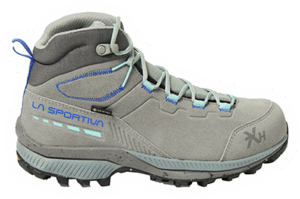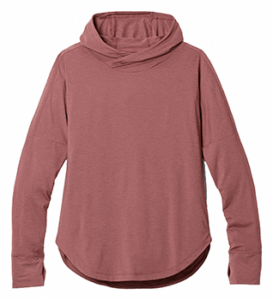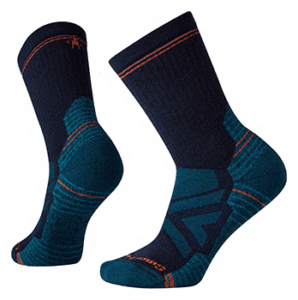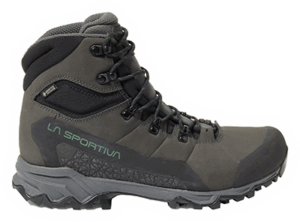Cuenca is a beautiful city that has a protected city center as a UNESCO World Heritage site. It has an interesting blend between indigenous culture and colonial/post-colonial influence that makes it a gem within the Andes Mountains. The top things to do in Cuenca Ecuador allow you to explore the history, archaeology, and art that make this city so inviting to visit and explore.
Cuenca, Ecuador Logistics Information
Is It Safe to Visit Cuenca, Ecuador
The short answer is yes. Cuenca, especially the touristy areas, is safe. It is always important to be aware of and careful with your belongings. It’s best to not wear ostentatious or flashy clothing/jewelry to not bring too much attention to yourself. It is also best to stay in the main touristy neighborhoods including the historical center and El Vergel. Finally, you will find that many restaurants do not stay open too late in the city.
Transportation in Cuenca

Where to Stay In Cuenca
The Historical Center
The historical center of Cuenca is a UNESCO heritage site due to the preservation of colonial buildings here. The buildings are preserved in their Spanish style, often with courtyards in the center of them. The city is anchored around the central square of Parque Calderon which contains two of the most famous churches of this city. The city has no church bells because of the architectural integrity of the buildings and the impact of earthquakes on those buildings. Walking around the historical center and exploring these churches is one of the best things to do in Cuenca Ecuador.

El Vergel
South of the city center is the neighborhood of El Vergel. This area is near the university of Cuenca and is more residential and local in nature. It is also walking distance from the historical center, although you will have to climb stairs to get to the center because it is located below the rest of the city. If you are looking for an Airbnb or a short term rental, then this is the area that you will want to stay in.
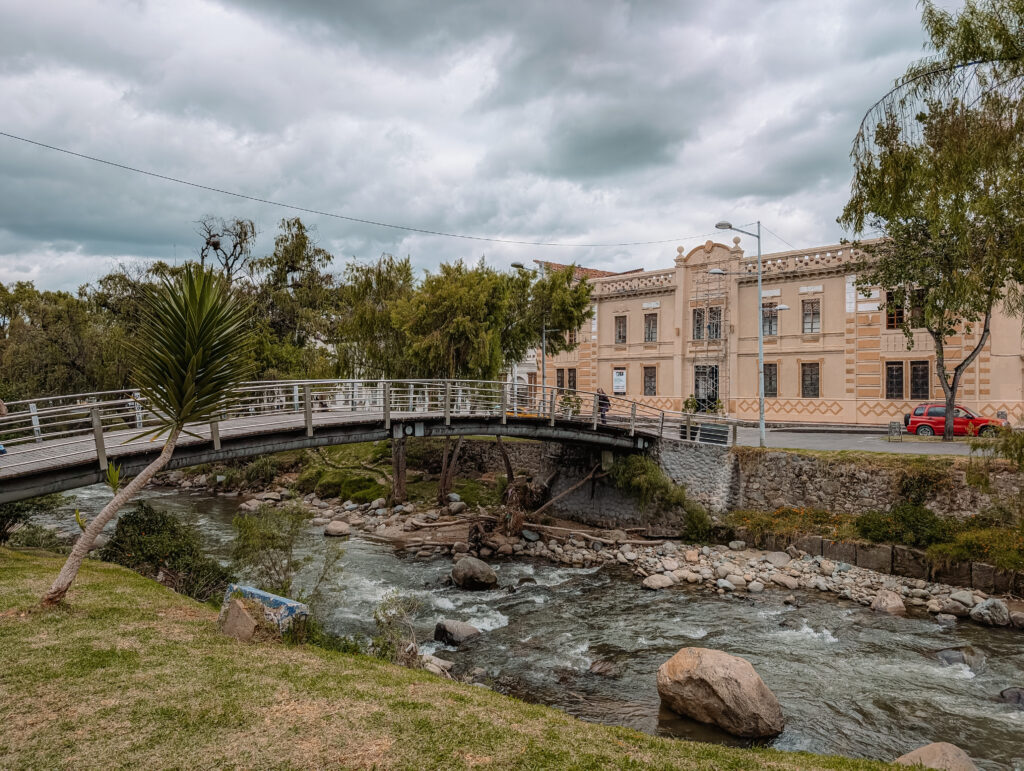
Looking for where to stay for in Cuenca? You can check out various hotels here.
Touring the Historical Center of Cuenca, Ecuador
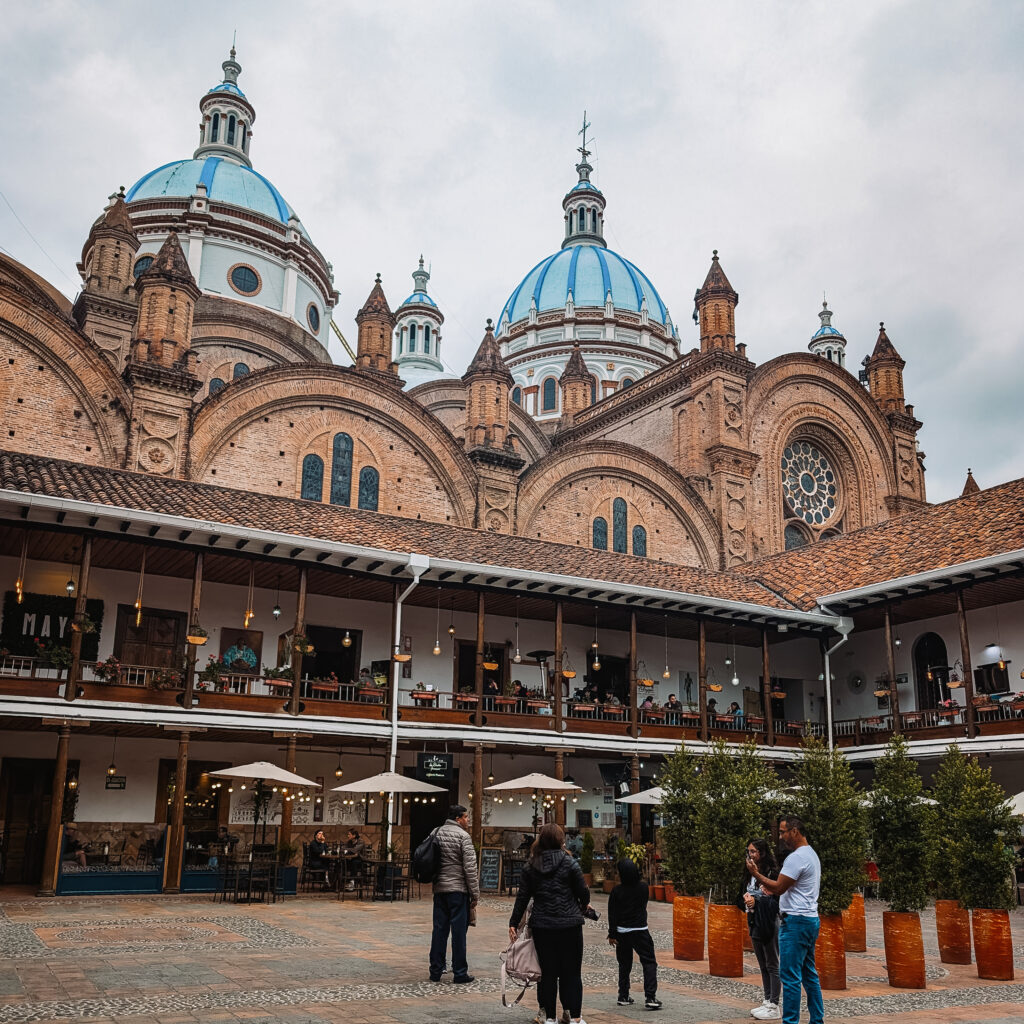
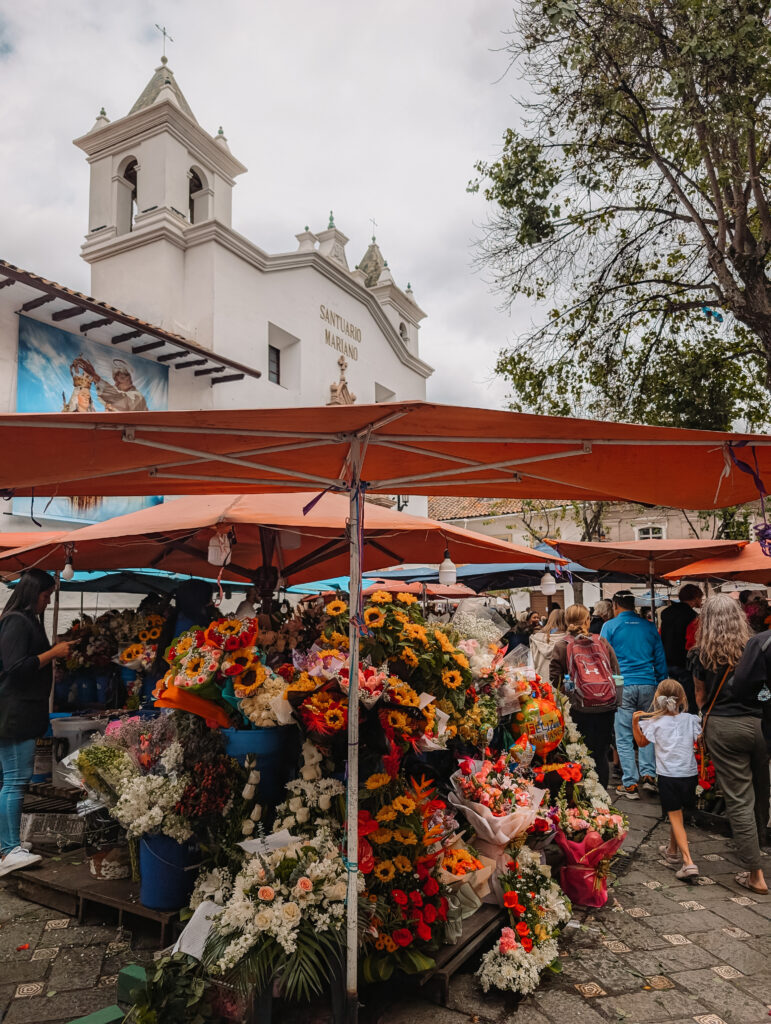
We recommend starting your exploration of the things to do in Cuenca Ecuador with a half day tour of the historical center of the town. The tour includes transportation to visit the Modren Art Museum of Cuenca, the famous Homero Ortega hat factory, and the city center. Here you will walk around to take in the beautiful architecture and visit various churches, both of which help define the important history and culture of the town.

Note About the Homero Ortega Hat Factory:
The famous Panama Hat is actually from Ecuador. (Legend says, the only reason it is called a Panama hat is because Theodore Roosevelt noticed the hats when visiting the Panama Canal construction and mistakenly called them “Panama hats”.) You can visit a factory where they continue to make the famous hats with the traditional artisanal techniques. Today, the weaving is done by artisans in the countryside around Cuenca and the shaping of the hats is completed at the Homero Ortega factory.

When you visit the factory, you get the chance to walk through a museum that explains the history and production of the hats. Then, you can walk around the factory space where you can see the machinery and workers complete the production of the hats, from the shaping to the detailing of each hat. At the end of your time in the factory, you can go to a shop where they sell their hats. The prices range from $40 to $3,000 depending on the quality of the materials used and the detail on the hats. This is the best place to purchase your souvenir of an authentic and high-quality Panama Hat!
While you can do this activity on the weekend, we recommend doing it during the week when you will have a chance to see the Panama Hats get made.
Mercado 10 de Agosto
After the tour, we recommend getting lunch at the Mercado 10 de Agosto (the central market of Cuenca) to get a traditional lunch. On the second floor of the market, there are many lunch vendors with a variety of food options, all of which have traditional Ecuadorian cuisine. It can be a little overwhelming so make sure to walk through the space with purpose and ignore any people vying for your attention until you have determined what you want to eat.
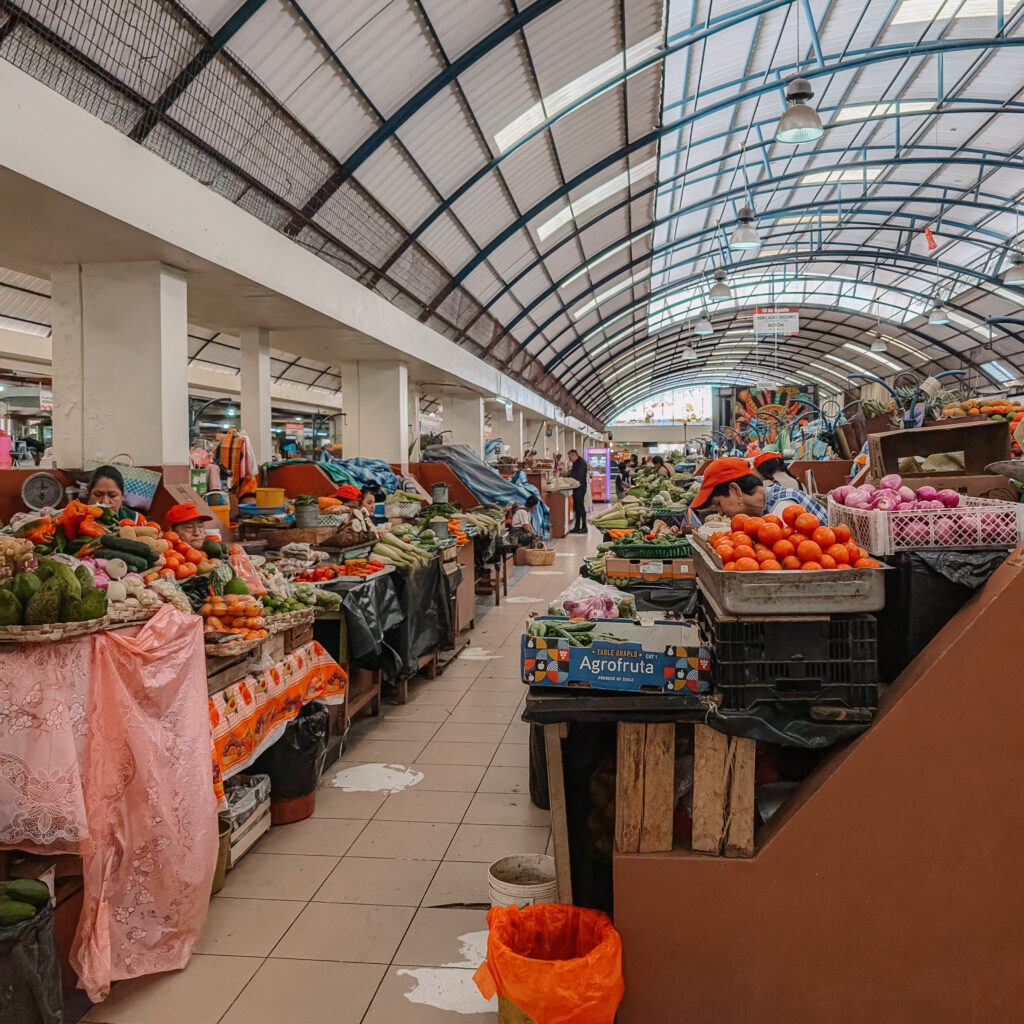
Museo Pumapungo
After lunch, finish out this day of learning at the Museo Pumapungo, which celebrates the many indigenous cultures that are located within the country. This free museum has three sections. The first is outside and constitutes an ancient Incan archaeological site. There are plaques around the site that help explain what you are looking at. The second is the temporary exhibit on the first floor which typically celebrates a piece of the indigenous cultures of Ecuador.
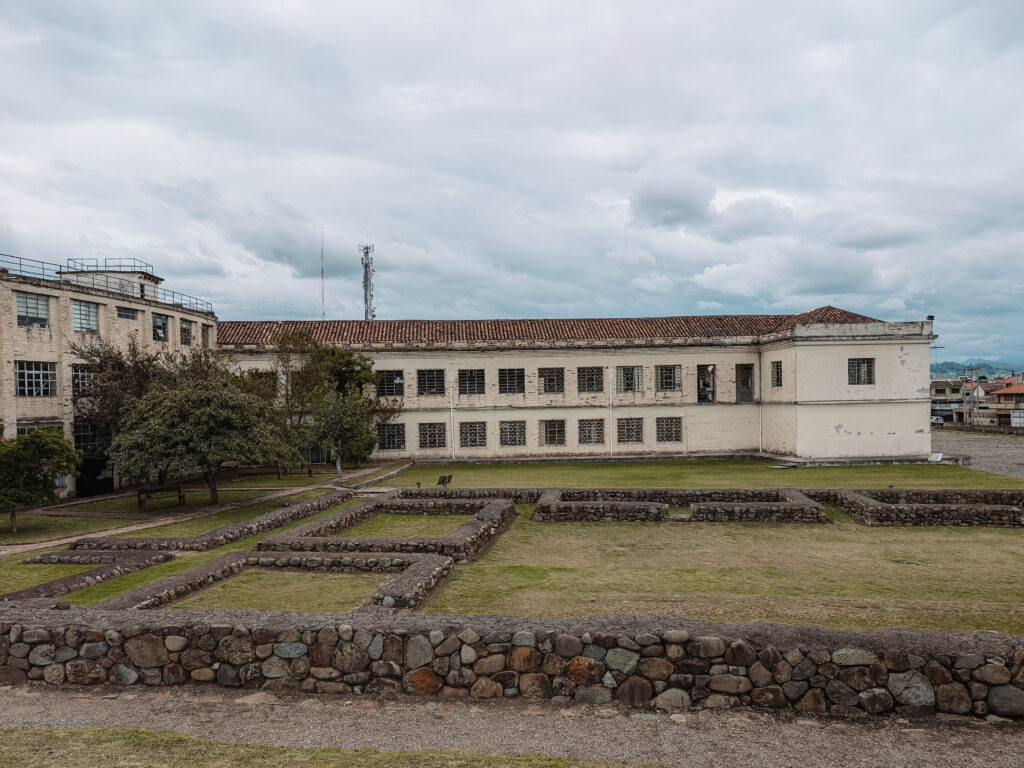
The final section is on the second floor of the museum and is where the permanent collection lies. Here, the museum describes each of the different indigenous ethnic groups that continue to exist in Ecuador, explaining some of their lifestyles, religious practices, and economic opportunities. While this is all in Spanish, you can still walk around this area and take in some of the different recreations and exhibitions that the museum has displayed to show clothing, artifacts, and replicas of homes that different cultures use.

There is one dedicated part to the Shuar people, an indigenous ethnic group from the Ecuadorian Amazonia region. They are known for their practice of collecting Tsantsa, shrunken heads, from their enemies. They would decapitate their enemies and go through a process of preserving and shrinking these heads to carry their souls with them. While today, they do not continue to practice this with human heads, they do collect Tsantsa from different animals that they kill in the Amazon Rainforest. You can learn more about this and other parts of their culture in the museum, with information provided in both English and Spanish.
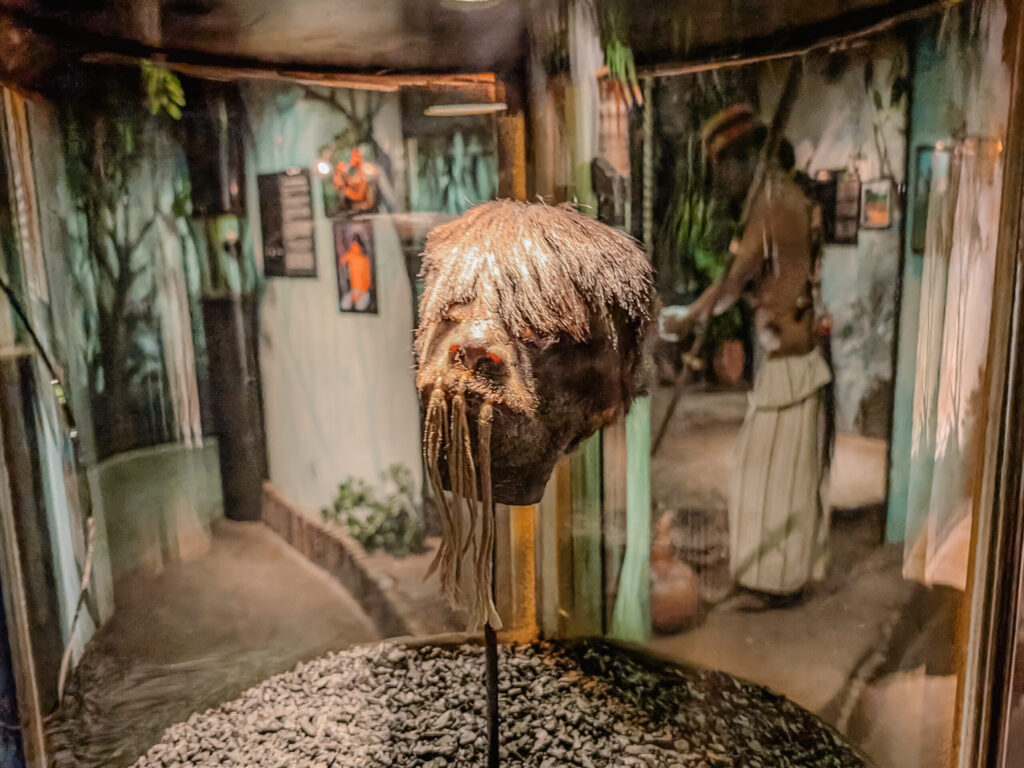
Cajas National Park
One of the top things to do in Cuenca Ecuador besides the beautiful historical center, is Cajas National Park. This park is in the Andes mountains and can be characterized by the large number of lakes within the protected area. Because of this and the location near the equator, there are many migratory birds that pass through this area, making it a great place for bird and nature lovers. In addition to nature, there are traces of Inca and Cañari activity within the park, including some Incan roads and about 28 different pre-Incan and Incan archaeological sites.
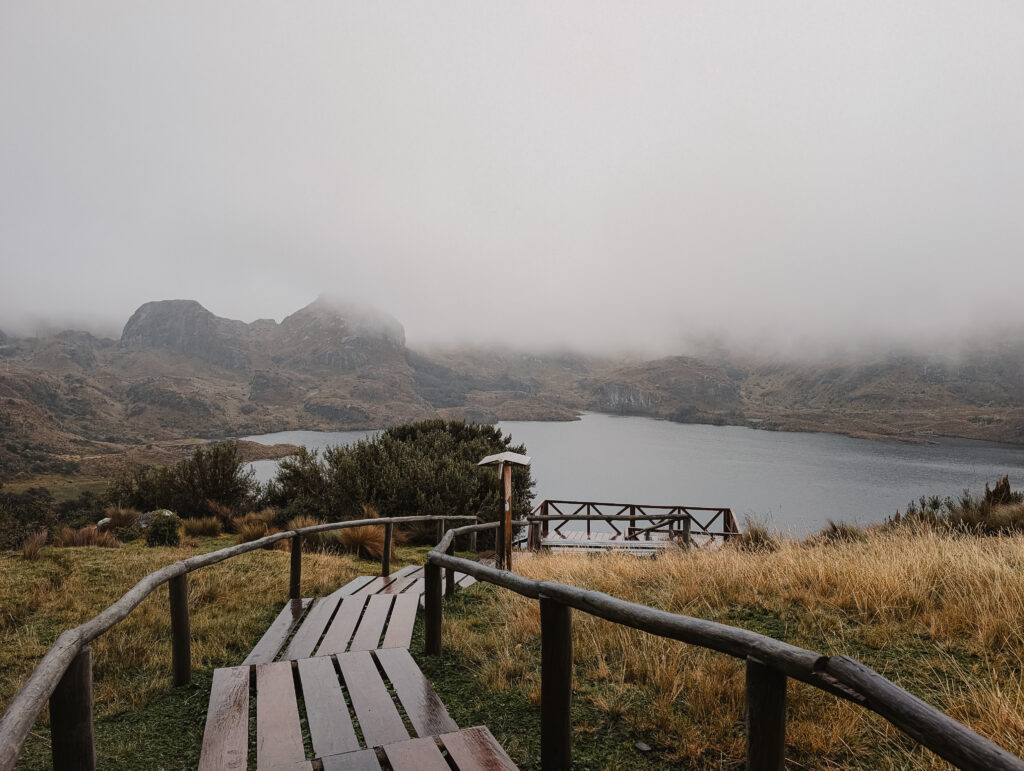
Many of the trails within the park are located right off the main road, the road that the bus takes to go from Cuenca to Guayaquil. You can see the variety of trails within Cajas National Park here. One loop that gives a great introduction to the park, is not very challenging, and is within the beautiful nature of the park is the Laguna Toreadora Loop. This trail is only 2 miles long (3.2 kilometers) and is relatively flat, making it a great way to visit the park if you are not an avid hiker or have not had the chance to adjust to the elevation.
Note:
Cuenca is at a high elevation of 8400 feet (2,560 meters) and Cajas National Park is even higher, ranging between 10,370-14,600 feet (3,160-4,450 meters) in elevation. Here are some tips to best acclimate to the altitude of the region:
- Eat smaller meals when first at elevation. This will help you feel better throughout the day.
- Avoid alcohol. It will decrease your oxygen level and you need as much oxygen as possible at a higher elevation.
- Drink as much water as possible! This will also help with the headaches that may appear due to the altitude.
- If things truly get worse, find a way to get to a lower elevation, and, in the meantime, you can try to get to a clinic or hospital to get some additional oxygen. The airport of Quito is at a lower altitude so you can get a hotel near the airport to help alleviate your symptoms.
- When walking, take smaller and slower steps with deep breaths.
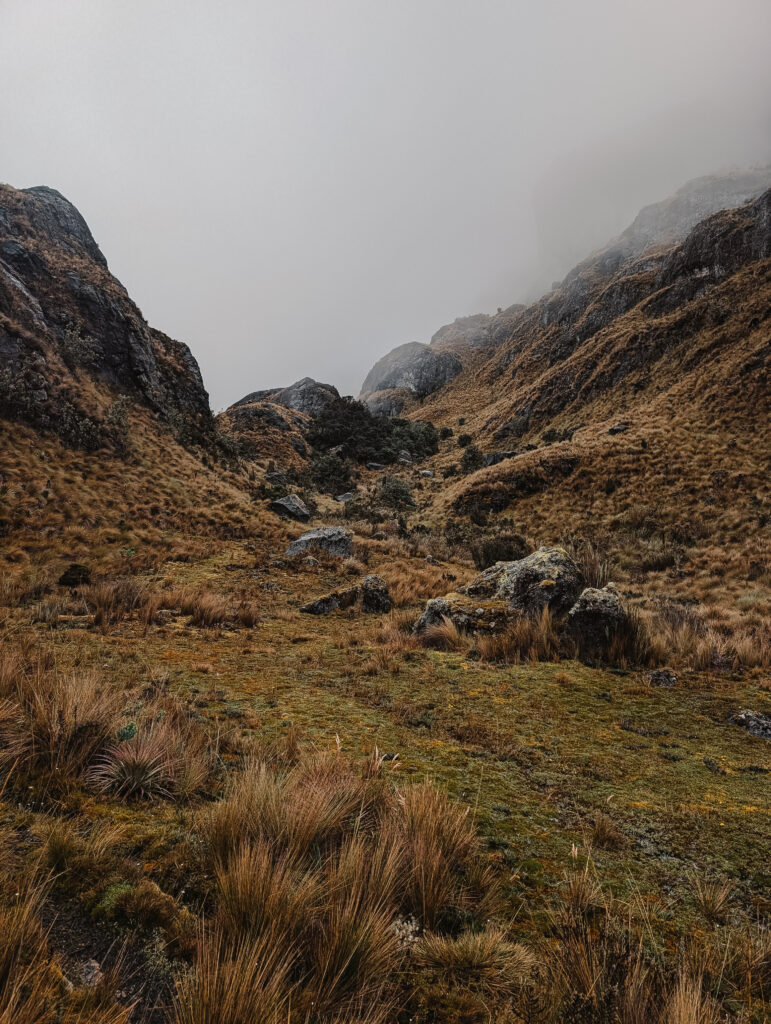
The Blueprint Travelers Hiking Staples
How to Get to Cajas National Park
The easiest way to get to the national park is by renting a car but this is definitely not necessary. There are two ways to get to the park that allow you to avoid driving yourself.
Taking a Bus to Cajas National Park
The first is by taking a bus that is going from Cuenca to Guayaquil. There are a few bus companies that make the route and they all start from Terminal Terrestre so you can go to the bus station in the morning or the prior day and find a bus making that route. Make sure to keep cash on you to pay for the bus in both directions. Each bus ride should be less than $5.
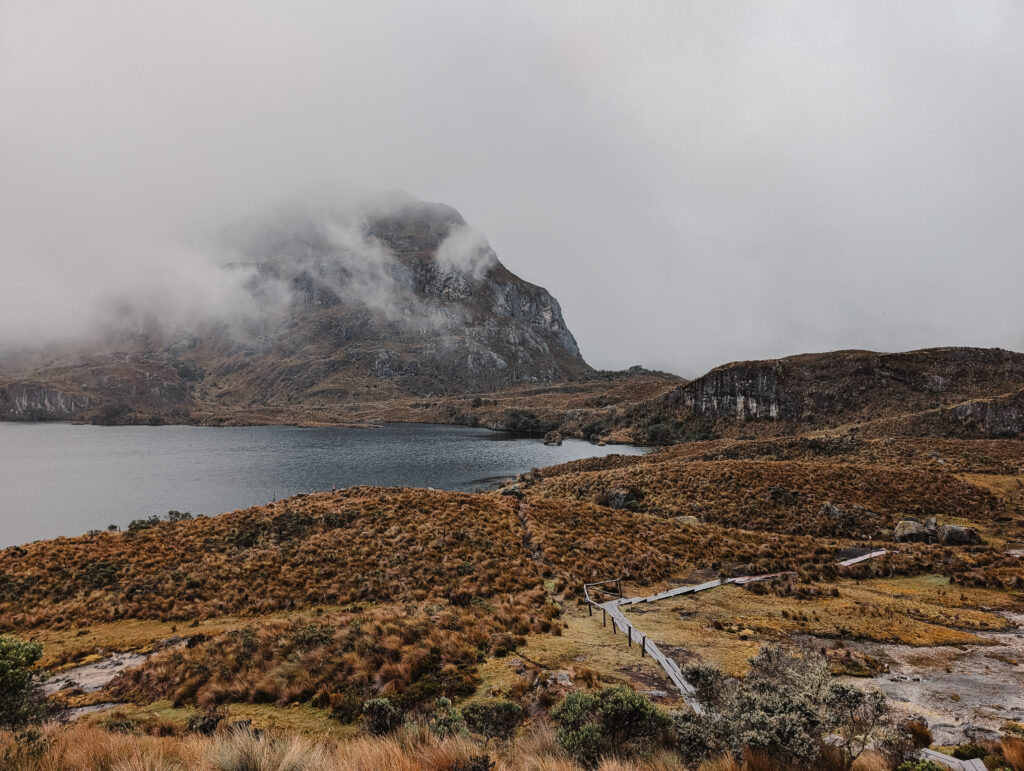
When getting on the bus, make sure to tell the bus driver that you are getting off at Cajas National Park and they will take you to the right location. In fact, this bus stop is near the Laguna Toreadora Loop trail that was mentioned above. To return to Cuenca, you can wait for a bus where the bus driver dropped you off (on the other side of the road where a bus shelter is located) and hail a bus as it passes. There are many buses that make the route and one will stop to take you back to Cuenca.
Taking a Tour (Group or Private) to Cajas National Park
The second option is to take this tour to Cajas National Park. In this group tour, the tour company will pick you up from your accommodations and take you to do two hikes within the National Park. If the weather permits, you will also visit a viewpoint overlooking the landscape of Cajas National Park. These tours also include lunch at a local eatery (typically a local trout dish). The advantage of this option is that you do not have to coordinate transportation to and from the national park. If you have a particular hike in mind, you can coordinate a private tour with a guide to take you on that hike.
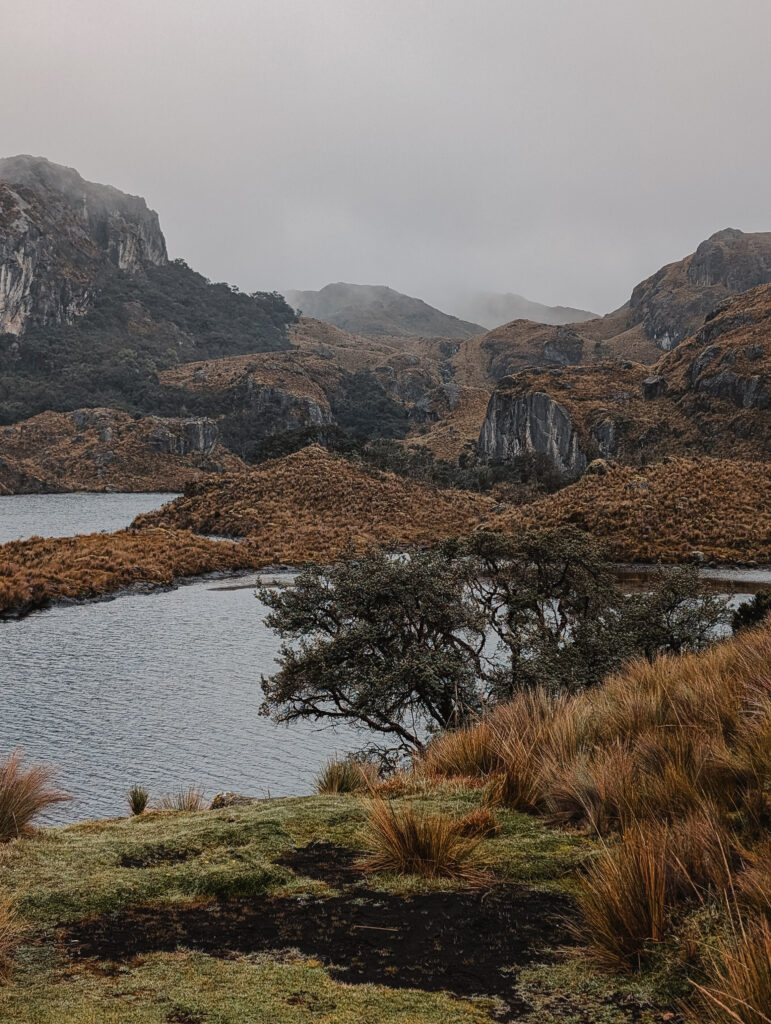
Mirador de Turi
After your hike in Cajas National Park, make your way to the Turi Viewpoint (Mirador de Turi). This viewpoint allows you to see the city below you along with the surrounding mountains. There are a few things that you can do here. First, there is a glass overhang at that you can visit to get a larger panoramic view of the city at Cuenca View 360 – Puente de Cristal. Second, there are a few restaurants and bars around this vista where you can grab a snack or drink while taking in the views.
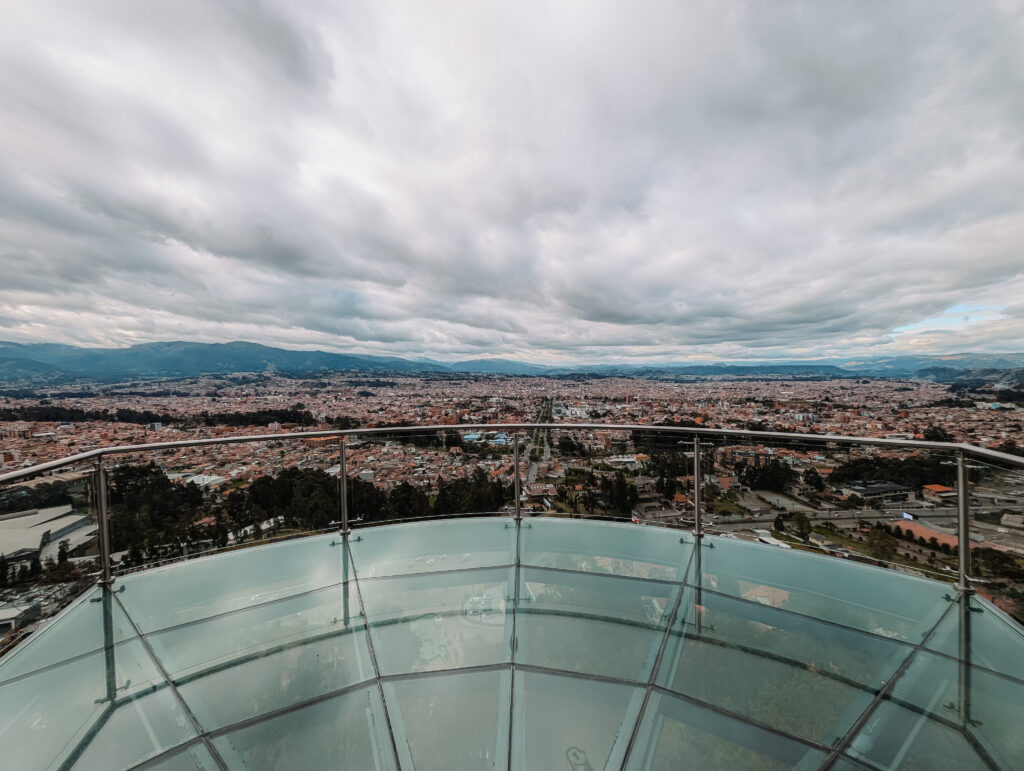
To return to your accommodations (assuming you are staying in the historic center or El Vergel), you can walk about 45 minutes to an hour if it is still daylight out. Otherwise, grab a cab to head back to your accommodations.
The Ingapirca Ruins
Just 1.5 hours outside of Cuenca are the largest and best preserved Incan ruins in Ecuador. The other thing that is special about this particular site is that there is proof that the Incan and Cañari people coexisted together. Not only are both of their temples located on their site; they are integrated in their design. (Often, when civilizations conquer another culture, they build their religious and power sites on top of the conquered one. This was not the case at this site).
Spending a day trip to visit these ruins is one of the top things to do in Cuenca Ecuador. With this tour to the Ingapirca Ruins, you will first stop at the Sanctuary of The Virgin of the Morning Dew, which is impressively constructed into the rock mountainside. You will drive through small communities of the Andes.

If you visit the ruins on a Sunday (which we recommend), you will get to stop at the local Cañar Market where the indigenous Cañari people continue to buy and sell their local goods and produce. Here, you can learn more about the indigenous culture that continues to prevail today.
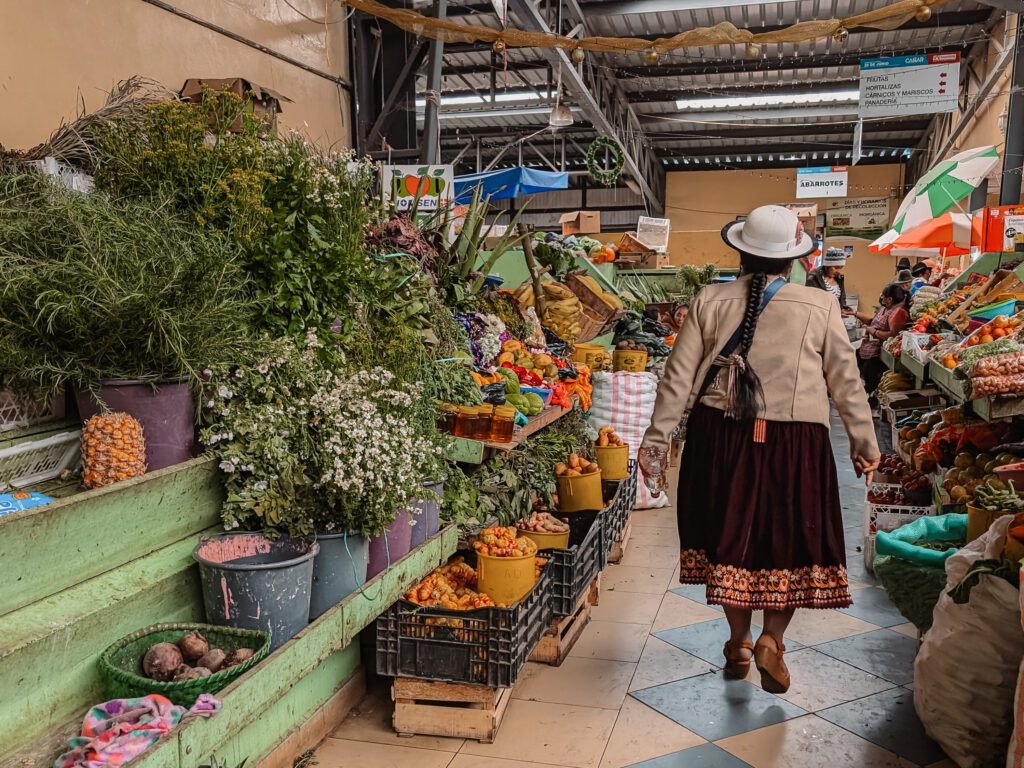
Finally, you will arrive at the Ingapirca Ruins where you will get a tour of the ruins. The guides will explain how much of the site is actually excavated (a lot of the archaeological site is actually located under private farmland), how the Incan and Cañari people lived together, and about the religion and lifestyle of each culture.
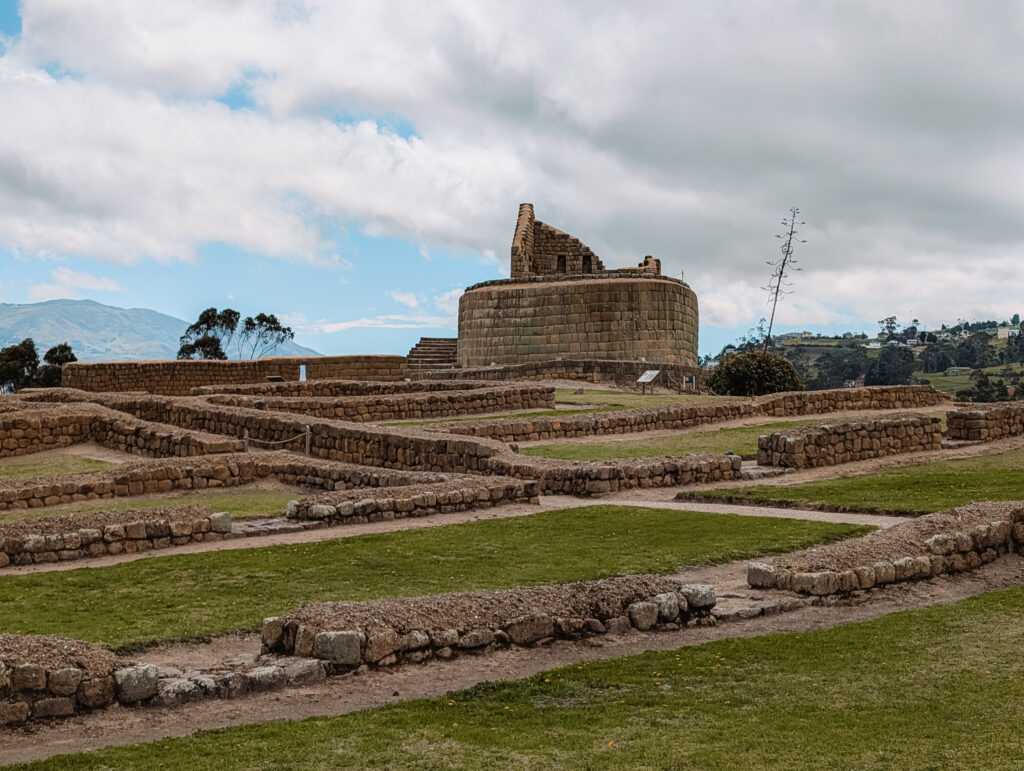
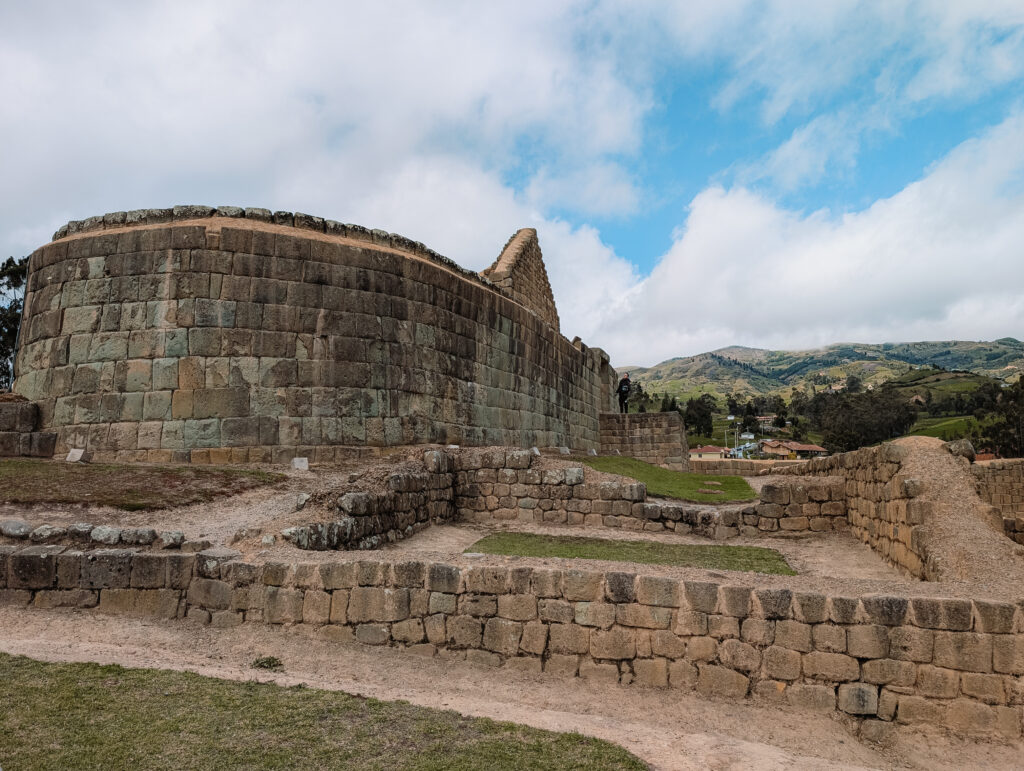
A 3 Day Itinerary of the Top Things To Do in Cuenca Ecuador
Here is how the activities above can fit together in a full itinerary.
Morning
Afternoon
Day 1
Take a half-day tour of Cuenca to explore the history and culture of the city center
Get lunch at Mercado 10 de Agosto
Explore the indigenous culture of Ecuador at the Museo Pumapungo
Day 2
Spend most of the day at Cajas National Park to take in the beautiful landscapes of the Andean Highlands
End the day at Mirador de Turi to get views of the city below
Day 3
Take a full day tour of the Ingapirca ruins to learn more about the ancient Incan and Cañari people


